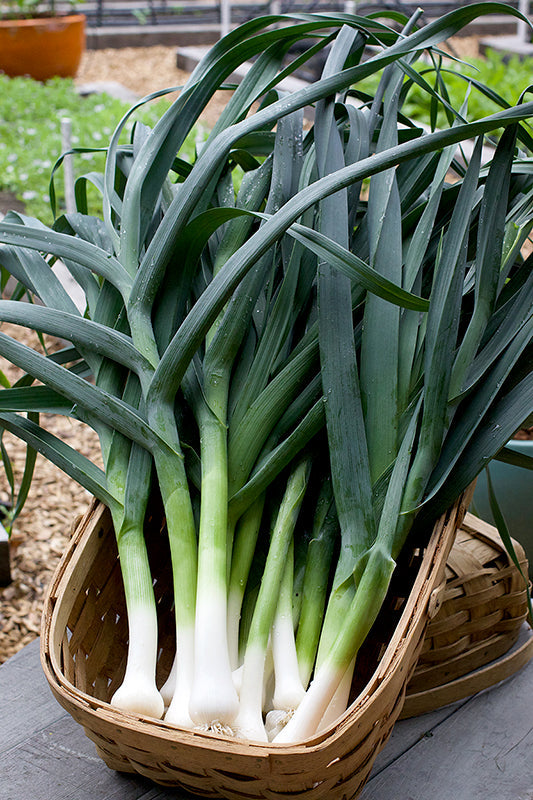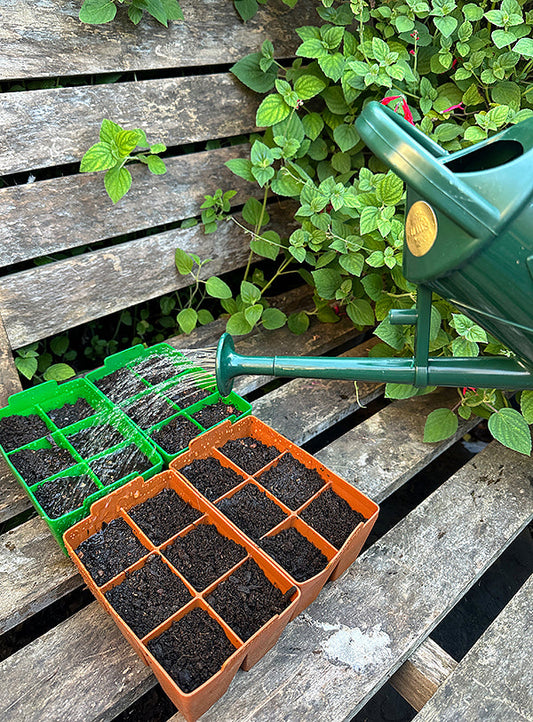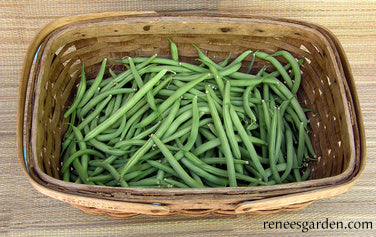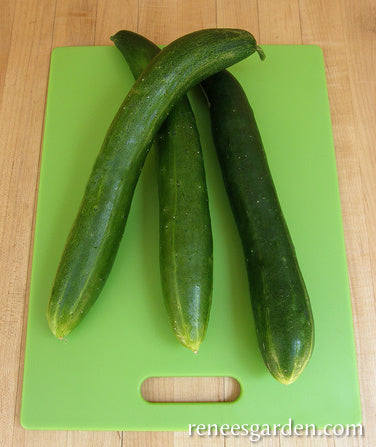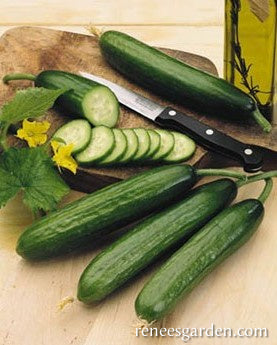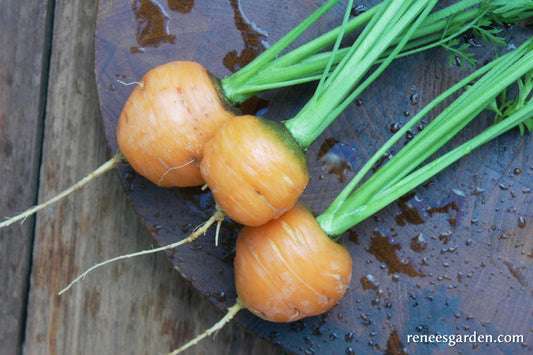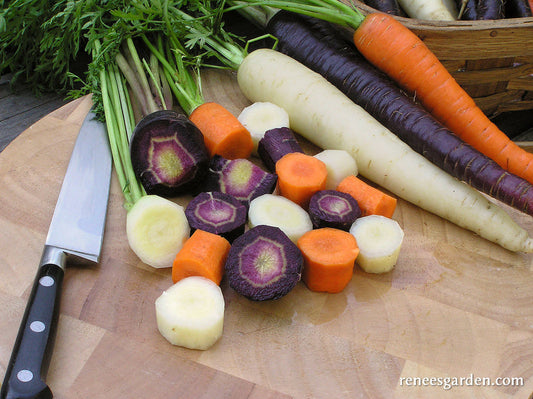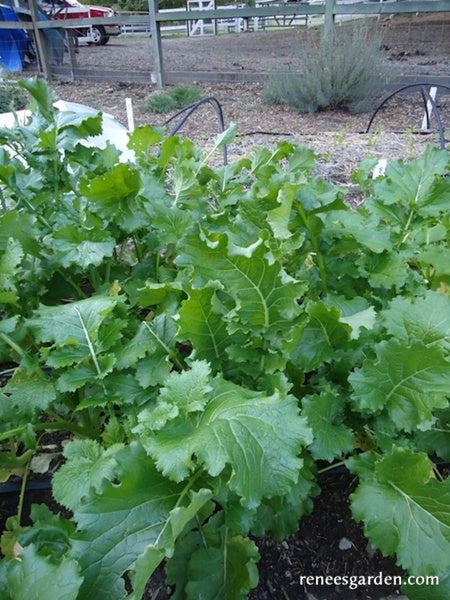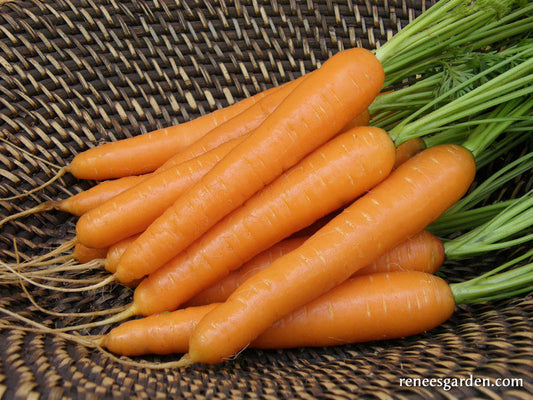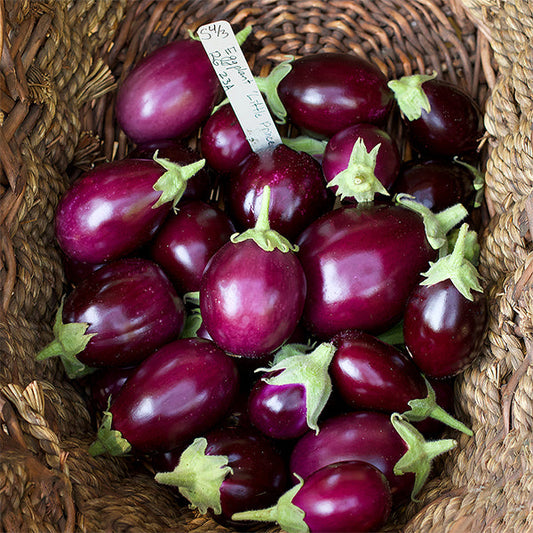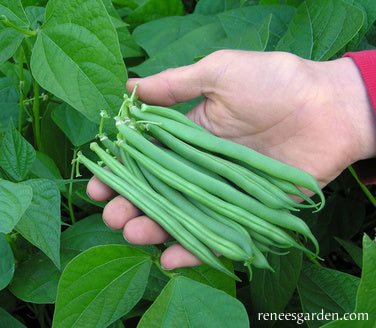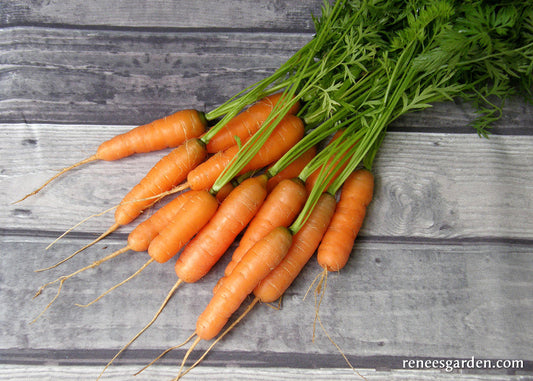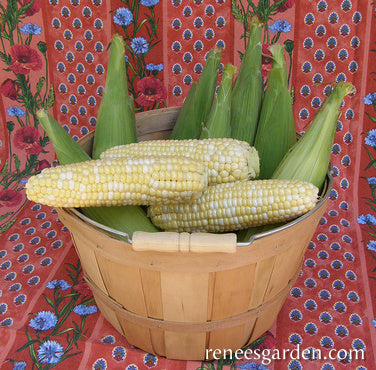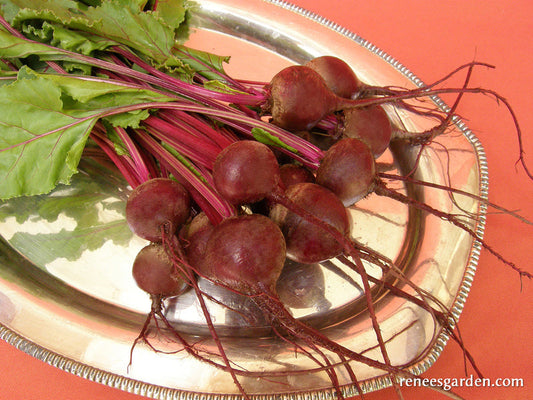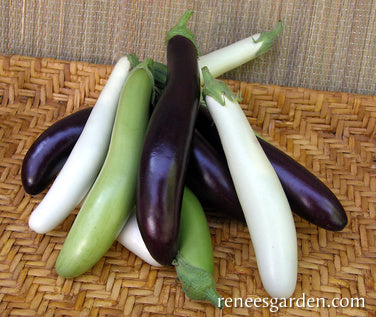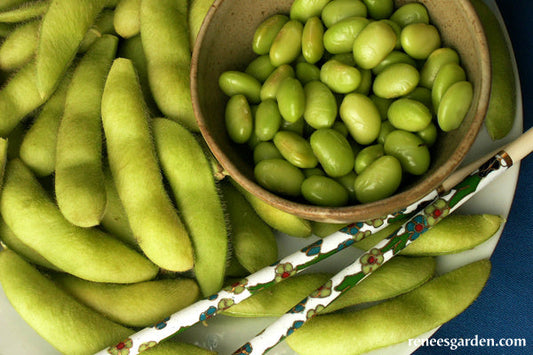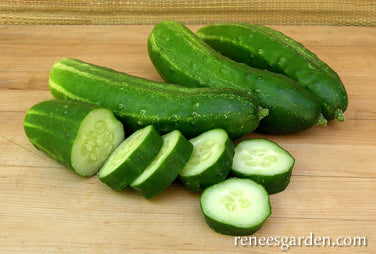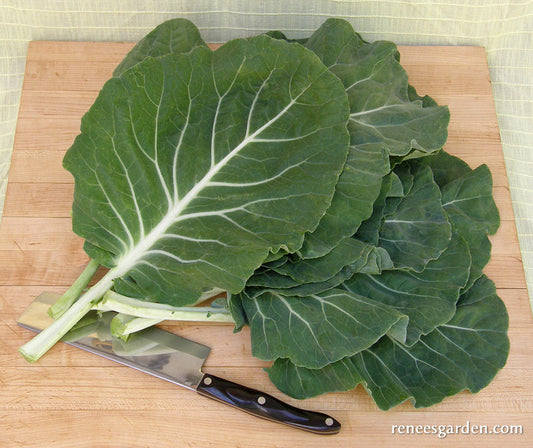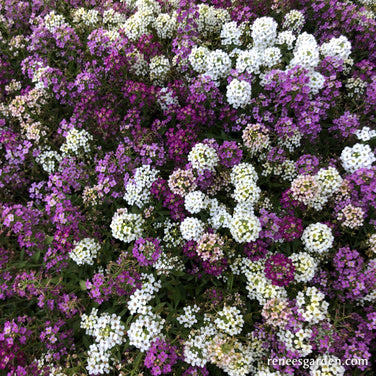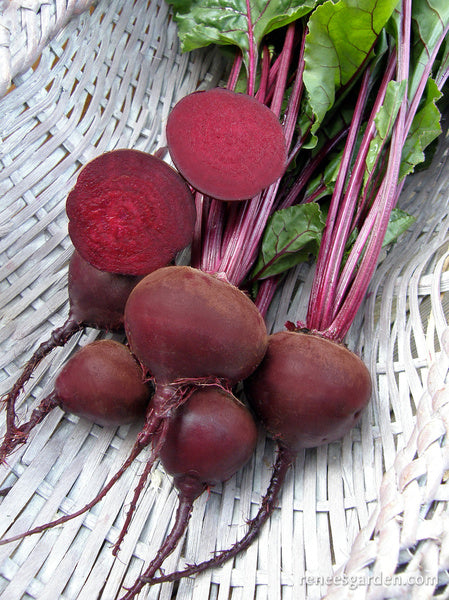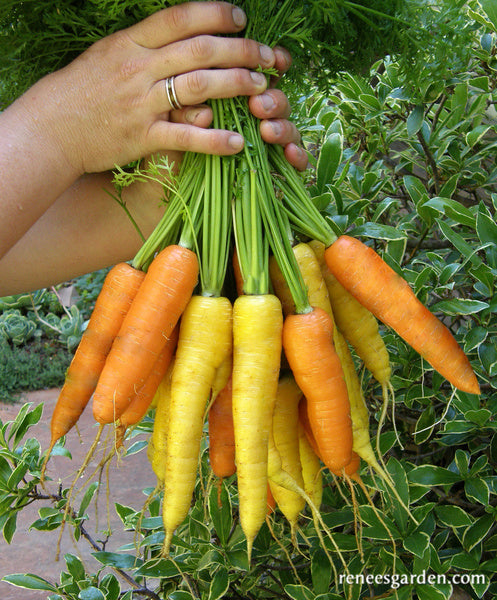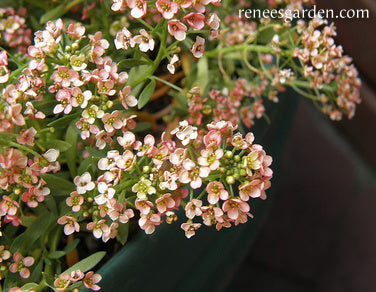All
-
Mexican Pearl
Classified as the "Creole type" garlic with origins in Spain. Mexican Pearl hails from the Sonora area of Mexico. This very productive variety behaves like a softneck in southern climates and like a hardneck in northern climates. The handsome heads get good protection from their attractive pearly white wrapper leaves; inside you'll find big, plump, creamy-colored cloves.
When used raw, Mexican Pearl is distinctively full flavored, warm and spicy, but roasted or used in cooked dishes, its flavor mellows, becomes more nutty and sweetens. It's wonderful to use in slow cooked dishes such as soups, stews, beans, roasting meat or poultry dishes. Or simply cut the top off a whole head to slowly roast to succulent perfection.
While it will grow happily all over the country, we particularly recommend Mexican Pearl for southern climates where it can take intense direct sun better than most other varieties.
See All Garlic and Shallots
1/2 lb. bag (3-6 full heads) / SoftneckRegular price $17.95Sale price $17.95Unit price / per -
Scented Geranium Trio V: Rose Garden
Three separate 3 1/2 inch pots with well-rooted, established starts for Old-Fashioned Rose, Attar of Roses, and Skeleton Rose scented geraniums, ready to plant. All orders include our carefully written, comprehensive Planting and Growing Guide for success when planted in the garden, in pots/window boxes, or indoors as houseplants.
Sold as a set of 3 plants, individually potted, carefully packed and shipped this trio will be shipped the week of 5/13 or 5/27. Plant orders ship directly from our grower. Sorry, we cannot ship to Alaska, Hawaii or Canada.
 See Full Description Regular price $34.95Sale price $34.95Unit price / per
See Full Description Regular price $34.95Sale price $34.95Unit price / per -
Leek Plants Lancelot
Get a head start on leeks’ long growing season by growing them from pre-started plants of our vigorous variety. Lancelot is a dynamite open pollinated variety, reliably producing long, thick, white shafts topped with deep blue-green leaves. Lancelot leeks grow uniformly, reaching 12-14 inches tall and they hold well in the garden to harvest as needed over a long period.
These premium leeks are juicy and delicious and when you grow your own, you will see why the French cooks often prefer them to onions. Versatile in the kitchen, Lancelot leeks can be substituted for onions in most recipes. They really shine in any slow cooked dish and are superb in a wide variety of soups and stews.
50-60 plants.
Regular price $26.95Sale price $26.95Unit price / per -
Haws 2 Pint Heritage Watering Can
The perfect small multi-purpose watering can for seedlings, the greenhouse or windowsill. With a removable brass fine spray pot rose, we’ve found that it’s the ideal size and spray pattern for gently watering delicate seedlings (and we tested several cans!). Balanced and comfortable in the hand, the long spout gives you extra reach.
Made in England from durable recycled plastic, the domed lid prevents spillage when pouring. Great for houseplants and containers, too.
Pair with our Sili-Seedling Silicone Seed Starting Trays or all-in-one Seed Starting System, and you have everything to get your seedlings off to a great start.
Choose from three sweet colors:
Dark Green, Sage Green or Light BlueRegular price $29.95Sale price $29.95Unit price / per -
Heirloom Bush Beans Provider
START SEEDS OUTDOORS
In spring, once weather is warm and settled and night temperatures stay securely above 55°F (13°C) plant seeds in well-worked, fertile soil in full sun. Poke seeds in 1 inch deep and 4 inches apart in rows 1½ to 2 feet apart. Make several sowings 2 to 3 weeks apart until the end of June to provide long continued harvests.
GROWING NOTES
Tender crispy garden beans are an easy and reliable crop to grow, but don't plant seeds too early as cold conditions prevent good germination. If first sowing comes up unevenly, replant right away; new seedlings will catch up quickly. Birds are often attracted to young bean seedlings, so watch carefully and protect with netting or floating row covers if necessary. Avoid cultivating plants or picking pods when plants are wet.
HARVEST AND USE
The vigorous plants bear strong harvests of top quality pods that hold well without getting stringy. The more you pick, the more the plants will produce, and the nitrogen fixing bacteria on the roots of bean plants actually improves your soil. Sow another crop about three weeks after your first planting and you’ll have a welcome second harvest in late summer. Enjoy tasty Provider beans cooked just until tender crisp. The pods also freeze well if blanched first.
Regular price $4.89Sale price $4.89Unit price / per -
Japanese Cucumber Tasty Treat Slicer
START SEEDS OUTDOORS
Plant heat loving cucumbers only when weather is warm and settled and night temperatures stay above 50°F (10°C). Amend soil well with aged manure or compost. Sow groups of 2 to 3 seeds 1½ feet apart and 1 inch deep with 3 feet between rows. Thin to 1 seedling per group. Or make slightly mounded hills 5 feet apart, sowing 5 or 6 seeds in each hill. Thin to the 3 strongest plants.
GROWING NOTES
Protect seedlings from marauding birds with plastic berry baskets, removing before plants get crowded. Shallow rooted cucumbers need ample and consistent moisture. Avoid overly wet or dry periods for good quality fruit. Growing cucumber vines up vertical supports gives you long straight fruits, saves garden space and makes them easy to harvest.
HARVEST AND USE
Cut rather than pull fruits from vines before seeds are large inside. Harvest every few days for longest fruit production. These juicy tender cucumbers need no peeling. Slice and enjoy for refreshing snacks, in salads and sandwiches. Eat cucumbers within a day or two of picking for best taste and quality.
Regular price $4.89Sale price $4.89Unit price / per -
Mediterranean Cucumber Garden Oasis
START SEEDS OUTDOORS
Plant heat-loving cucumbers only when weather is warm and settled and night temperatures stay above 50°F (10°C). Amend soil well with age manure or compost. Sow groups of 2 to 3 seeds, 1 inch deep and 18 inches apart. When the baby seedlings are 2 inches long, thin out extras, leaving one strong seedling per group. After thinning, provide a 4 to 5 foot strong vertical support or individual tomato cage around each seedling and train the vines up the supports as they grow. Growing vigorous, heavy-bearing cucumber vines up supports or cages makes it easier to harvest the cucumbers, saves garden space and helps prevent disease.
GROWING NOTES
Protect seedlings from marauding birds with plastic berry baskets, removing before plants get crowded. Shallow-rooted cucumbers need adequate and consistent moisture to produce sweet tasting, nicely formed cucumbers. Avoid overly wet or dry periods for good quality fruits.
HARVEST AND USE
Cut rather than pull fruits from vines before seeds are large inside. Harvest every few days for longest fruit production. These juicy, tender cucumbers are perfect to slice and enjoy for refreshing snacks, in salads and sandwiches. Eat within a day or two of picking for best taste and quality.
Regular price $4.39Sale price $4.39Unit price / per -
Round Baby Carrots Romeo
START SEEDS DIRECTLY OUTDOORS
In spring, once danger of hard frost is past, sow seeds in full sun in a container of fresh potting soil. To have enough soil surface and volume, containers should be at least 16 to 18 inches in diameter and 8 to 12 inches deep. Sow seeds carefully 1/2 inch apart and then cover very lightly.
Keep the seedbed evenly moist as carrots can be slow to germinate, emerging over 10 to 20 days. Germinating carrots need consistent moisture; a good trick is to cover the soil surface with floating row cover to help retain moisture during the germination period and water right through it. Take off the cover as soon as you see sprouts.
GROWING NOTES
Thin carrots several times so seedlings are 2 inches apart and have room to size up for harvest. Keep well watered for best growth and flavor. For a late season crop, sow again 3 months before first expected frost.when plants are young. Mulch well to conserve soil moisture and suppress weed growth.
HARVEST AND USE
Harvest at about 1 to 1 1/2 inches in diameter for best flavor. Steam whole, then toss with butter and fresh chopped dill, parsley or chives. Or toss with butter, salt lightly and add a little brown sugar or maple syrup.
Regular price $3.39Sale price $3.39Unit price / per -
Tricolor Carrots Circus Circus
START SEEDS OUTDOORS
In spring once danger of hard frost is past, sow seeds in full sun in finely worked, fertile soil. Sow 1/4 inch deep and 1/2 inch apart in rows 8 inches apart, or broadcast thinly in beds and cover lightly. Keep seedbed evenly moist as carrots can be slow to germinate, emerging over 10 to 20 days.
If first sowing comes up unevenly, replant right away as seedlings catch up quickly. Be sure to thin young carrots several times so seedlings are about 2 inches apart and have the room they need to size up.
GROWING NOTES
Carrots like well-worked soil and need consistent moisture to grow well. If your soil tends to dry out, cover seedbed with floating row cover to help retain moisture during the germination period and water right through it. Keep carrots well-watered and thinned. For a late season crop, sow again 3 months before first expected frost.
HARVEST AND USE
For best sweet flavor, let these pretty, different colored carrots size up and fully mature before harvesting. Enjoy these extra healthy carrots raw as snacks or grated into salads for great eye appeal. Sauté or steam just until tender crisp and serve with a little sweet butter and your favorite fresh chopped herb. Carrots go well with dill, tarragon, chives, cilantro or mint.
Regular price $3.99Sale price $3.99Unit price / per -
Heirloom Broccoli Raab Early Rapini
START SEEDS DIRECTLY IN THE GARDEN
In very early spring as soon as ground can be worked, prepare a well-drained, fertile garden bed in full sun. Sow seeds 2 inches apart in rows 6 to 8 inches apart. Cover 1/2inch deep and keep soil evenly moist to ensure good germination. When seedlings are 3 to 4 inches tall, thin to stand 4 to 6 inches apart.
GROWING NOTES
Sow Broccoli Raab in cool early spring weather, about the same time as you plant turnips and radishes. Consistent moisture, early thinning and an adequate supply of nitrogen will encourage the quick growth needed to produce tender juicy shoots with plump buds. Use non-toxic B.T. (Bacillus thuringiensis) products to control caterpillar pests as necessary. Make several sowings a week apart for a continuous harvest. Sow again in late summer for a fall crop.
HARVEST AND USE
Harvest both leaves and flowering stalks at 7 to 8 inches tall, when stalks are still tender and juicy with closed buds. After cutting, water plants and feed with fish emulsion solution to get a second harvest in a few weeks. Enjoy the hearty flavor of these vitamin-rich greens by briefly steaming or prepare traditionally by first blanching them quickly in boiling water and then sautéing them in olive oil with chopped garlic, just until tender.
Regular price $4.89Sale price $4.89Unit price / per -
Snacking Carrots Rotild
START SEEDS OUTDOORS
In spring once danger of hard frost is past, sow seeds in full sun in finely worked, fertile soil. Sow 1/4 inch deep and 1/2 inch apart in rows 8 inches apart, or broadcast thinly in beds and cover lightly. Keep seedbed evenly moist as carrots can be slow to germinate, emerging over 10 to 20 days. If first sowing comes up unevenly, replant right away as seedlings catch up quickly. Be sure to thin young carrots several times so seedlings are about 2 inches apart and have room to size up.
GROWING NOTES
Carrots like well worked soil and need consistent moisture to grow well. If your soil tends to dry out, cover seedbed with floating row cover to help retain moisture during the germination period and water right through it. Keep carrots well watered and thinned. For a late season crop, sow again 3 months before first expected frost.
HARVEST AND USE
Let young carrots size up and color fully to orange before harvesting for best flavor. Sauté or steam just until tender crisp and serve with a squeeze of fresh lemon or lime juice, sweet butter and fresh dill; or try buttered and glazed with a little maple syrup or honey.
Regular price $4.89Sale price $4.89Unit price / per -
Container Eggplant Little Prince
BEST TO START INDOORS
In early spring, start indoors about six to eight weeks before night temperatures reach 55° (13°C). Sow seeds 1/4 inch deep and 1 inch apart in containers of seed starting mix. Keep moist and warm, 80-85°F (27-29°C) and provide a strong light source until ready to plant outside. When seedlings are 2 inches tall, transplant into 4-inch pots. Maintain at 70-75°F (21-24°C). Feed with half-strength fertilizer every 2 weeks until weather is warm, then gradually acclimate seedlings to outdoor conditions.
Transplant In Pots: Plant 1 to a pot 12 inches across and deep, or plant several seedlings 8 inches apart in larger containers at least 16 to 18 inches across and deep.
In Garden Beds: Amend soil with compost or aged manure, then plant in full sun 2 feet apart.
GROWING NOTES
Transplant outdoors only when nights are securely above 55° (13°C). For containers, always use new, high quality potting mix. Plant only robust seedlings with well-developed roots and mulch them well. Feed regularly every few weeks throughout the season with good all-purpose fertilizer.
HARVEST AND USE
Pick often from productive plants when fruits size up glossy and firm-fleshed and before skins get dull. Enjoy these handy-sized eggplants halved or in thick slices sautéed with garlic and herbs or grilled to succulence on the barbeque.
Regular price $3.39Sale price $3.39Unit price / per -
Bush Beans Classic Slenderette
START SEEDS OUTDOORS
In spring, once weather is warm and settled and night temperatures stay securely above 55°F (13°C), plant seeds in well-worked, fertile soil in full sun. Poke seeds in 1 inch deep and 4 inches apart in rows 1 1/2 to 2 feet apart. Make several sowings 2 weeks apart until the end of June to provide continued harvests.
GROWING NOTES
Tender crispy garden beans are an easy reliable crop to grow, but don't plant seeds too early as cold conditions prevent good germination. If first sowing comes up unevenly, replant right away; new seedlings will catch up quickly. Birds are often attracted to young bean seedlings, so watch carefully and protect with netting or floating row covers if necessary. Avoid cultivating plants or picking pods when plants are wet.
HARVEST AND USE
The vigorous plants bear strong harvests of top quality pods that hold well without getting stringy. The more you pick, the more the plants will produce, and the nitrogen fixing bacteria on the roots of bean plants actually improves your soil. Sow another crop about three weeks after your first planting and you’ll have a welcome second harvest in late summer. Slenderette beans are wonderful for quick cooking, they freeze well, or use them to make jars of tasty pickled dilly beans.
Regular price $3.69Sale price $3.69Unit price / per -
French Baby Carrots Babette
START SEEDS OUTDOORS
In spring once danger of hard frost is past, sow seeds in full sun in finely worked, fertile soil. Sow 1/4 inch deep and 1/2 inch apart in rows 8 inches apart, or broadcast thinly in beds and cover lightly. Keep seedbed evenly moist as carrots can be slow to germinate, emerging over 10 to 20 days.
If first sowing comes up unevenly, replant right away as seedlings catch up quickly. Be sure to thin young carrots several times so seedlings are about 2 inches apart and have room to size up.
GROWING NOTES
Carrots like well worked soil and need consistent moisture to grow well. If your soil tends to dry out, cover seedbed with floating row cover to help retain moisture during the germination period and water right through it. Keep carrots well watered and thinned. For a late season crop, sow again 3 months before first expected frost.
HARVEST AND USE
Let these baby carrots color up to orange before harvesting for best flavor. Pull as babies or let fully size up. Sauté or steam just until tender crisp and serve with a squeeze of fresh lemon or lime juice, sweet butter and fresh dill; or try buttered and glazed with a little maple syrup or honey.
Regular price $4.99Sale price $4.99Unit price / per -
Early Bicolor Corn Bon Jour
START SEEDS OUTDOORS
In spring, once weather is warm and settled and night temperatures stay securely above 55°F (13°C), plant seeds in well-worked, fertile soil in full sun. Poke seeds in 1 inch deep and 4 to 6 inches apart. Plant in a block of 4 side-by-side rows, each row at least 1 foot apart. Thin seedlings to 1 foot apart when several inches tall. Protect from marauding birds if necessary. If first sowing doesn’t germinate evenly, replant right away as new seedlings catch up quickly. Make several sowings 2 or 3 weeks apart until early June to have successive harvests.
GROWING NOTES
There is no need to isolate Bon Jour from other varieties, but plant seeds in blocks of at least 4 parallel rows to ensure good wind pollination and well filled out ears. Corn is a heavy feeder, so add plenty of compost or aged manure to the soil at sowing time, and then fertilize when young plants are 7 to 8 inches tall and again as ears begin to form.
HARVEST AND USE
Well filled out ears of corn are ready to eat when the silks are very dark brown and dried out. Test by choosing a plump ear and peeling back the husk very slightly. The kernels should be tender and milky when slit with a fingernail. Bon Jour is a SE corn, so the tender crisp kernels will hold their sweetness after harvest.
Regular price $4.69Sale price $4.69Unit price / per -
Dutch Beets Baby Ball
START SEEDS OUTDOORS
In early spring when danger of hard frost is over, sow seeds in well-worked, fertile soil in full sun. Sow seeds 1 inch apart and 1/2 inch deep in rows 8 inches apart, or broadcast thinly for bed planting. Firm soil well over these irregularly shaped seeds to ensure good germination. If first sowing germinates unevenly, plant more seed in the rows as seedlings will catch up fast. Carefully thin when seedlings are large enough to handle to 3 to 4 inches apart so roots have room to grow and mature.
GROWING NOTES
For tender, best quality beets, sow seeds before midsummer heat and again in early fall at least 10 weeks before fall frosts. Keep soil evenly moist throughout the growing season. Be sure to thin beet seedlings carefully several times as they grow best when given enough room.
HARVEST AND USE
Harvest baby beets at 1 to 1 1/2 inches in diameter, or let some mature into full-sized beets. Briefly steam the tender-sweet tops for tasty greens. Freshly picked baby beets will cook very quickly; just steam, then peel and serve them with a little sweet butter and a sprinkle of chopped parsley or fresh dill leaf. Or try your own pickled baby beets!
Regular price $3.99Sale price $3.99Unit price / per -
Heirloom Eggplants Asian Mix
BEST TO START INDOORS
In early spring, start indoors about 2 months before outdoor night temperatures are reliably in the 50-55°F (10-13°C) range. Sow seeds 1/4 inch deep and 1 inch apart in a container of seed starting mix. Keep moist and warm 80-85°F (27-30°C) and provide a strong light source until ready to plant outside. When seedlings are 2 inches tall, transplant into deeper individual containers. Maintain at 70-75°F (21-24°C). Feed with half-strength fertilizer every 2 weeks until weather is warm enough to gradually acclimate seedlings to outdoor conditions. Transplant 2 feet apart into rich soil in full sun.
GROWING NOTES
Don’t transplant these heat-lovers outdoors until nights stay securely above 55°F (13°C). Prepare soil well with aged manure or compost. Plant only robust seedlings with well-developed roots and mulch well. Fertilize plants regularly throughout the season.
HARVEST AND USE
Pick when fruits have sized up and are firm fleshed and glossy. Slice 1/2 inch thick, brush with olive oil and broil until tender. Then layer with a rich tomato sauce, fresh herbs and several cheeses to make Eggplant Parmesan. Bake whole in a hot oven, then scoop out flesh and mash with garlic, olive oil, lemon juice and chopped parsley for a savory dip to serve on toasted pita bread.
Regular price $4.89Sale price $4.89Unit price / per -
Fresh Soy Beans Edamame
START SEEDS OUTDOORS
In spring, once weather is warm and nights stay securely above 55°F (13°C), sow in well-worked, fertile soil in full sun. Plant seeds 1 inch deep and 3 inches apart in rows 2 feet apart. When seedlings are several inches tall, thin to final spacing of 6 inches apart. Make several sowings a few weeks apart until the end of June or early July to provide successive harvests.
GROWING NOTES
Edamame is easy and reliable to grow, but wait until weather warms before planting; cold and/or wet conditions prevent good germination. If first sowing comes up unevenly, replant right away; new seedlings catch up quickly. Be sure to thin to final 6 inch spacing for best pod production. Birds are often attracted to young seedlings, so watch carefully and protect with netting or floating row cover if necessary. Avoid cultivating plants when wet.
HARVEST AND USE
As edamame ripen, the beans swell in the pods. Pick promptly when pods are plump and beans are almost touching each other inside the pods but before the pods turn yellow. When ripe, harvest is concentrated over a short period. To prepare: cook unopened pods in a large pot of boiling salted water for 2 to 4 minutes or just until the beans in pods are tender. Drain and serve hot or cold, sprinkled with coarse salt to taste.
Regular price $4.99Sale price $4.99Unit price / per -
Heirloom Slicing Cucumber Straight Eight
START SEEDS OUTDOORS
Plant heat loving cucumbers only when weather is warm and settled and night temperatures stay above 50°F (10°C). Amend soil well with aged manure or compost. Sow groups of 2 to 3 seeds 1 1/2 feet apart and 1 inch deep with 3 feet between rows. Or make slightly mounded hills 5 feet apart, sowing 5 or 6 seeds in each hill. Thin to the 3 strongest plants.
GROWING NOTES
Protect seedlings from marauding birds with plastic berry baskets, removing before plants get crowded. Shallow rooted cucumbers need ample and consistent moisture. Avoid overly wet or dry periods for good quality fruit. Growing cucumber vines up vertical supports gives you long straight fruits, saves garden space and makes them easy to harvest.
HARVEST AND USE
Cut rather than pull fruits from vines before seeds are large inside. Harvest every few days for longest fruit production. These juicy, tender cucumbers are perfect to slice and enjoy for refreshing snacks, in salads and sandwiches. Eat within a day or two of picking for best taste and quality.
Regular price $4.89Sale price $4.89Unit price / per -
Portuguese Kale Tronchuda Beira
TO START DIRECTLY IN THE GARDEN
As soon as ground can be worked in spring, prepare a well-drained, fertile garden bed in full sun. Sow groups of 2 to 3 seeds, each group 12 to 18 inches apart. Cover 1/4 deep and keep soil evenly moist to ensure good germination. Thin to one seedling per group when several inches tall. Sow again in mid to late summer for another cold-hardy crop.
TO START INDOORS
Sow seeds in a container of seed starting mix 2 inches apart and cover 1/4 inch deep. Keep moist and provide a strong light source until seedlings are 3 to 4 inches tall, then plant outdoors. Space 12 to 18 inches apart.
GROWING NOTES
Kale can be sown in spring as early as the ground can be worked. A second mid to late summer-sown crop will yield through fall and winter except in the coldest climates. Frost actually enhances kale leaves’ color, flavor and sweetness. Mulch to retain moisture in summer and before the ground freezes to protect the roots of fall crops.
HARVEST AND USE
Begin harvesting large individual outer leaves when plants have 6 to 8 big leaves. Enjoy sautéed, stirfried, braised or added to soups and stews. Portuguese kale pairs well with olive oil, garlic and lemon juice (reneesgarden.com/portuguese-kale-soup). Pull and discard once plants begin to bloom as the leaves of flowering stalks get tough and bitter.
Regular price $3.99Sale price $3.99Unit price / per -
Honey-Scented Alyssum Gulf Winds
HARDY ANNUAL
Spring/summer bloom
Can handle frostEASIEST TO PLANT DIRECTLY IN THE GARDEN
Plant in early spring in well worked garden soil in a sunny spot. Sow seeds 1 to 2 inches apart and barely cover. Keep evenly moist while awaiting germination. Seedlings will grow into a carpet of fine textured leaves, followed by a blanket of soft flowers.
TO START EARLY INDOORS
Sow indoors 3 to 4 weeks before last frost in a large container. Broadcast seeds 1/2 to 1 inch apart. When seedlings are well established and the danger of frost is over, separate clusters of 4 to 5 seedlings and plant each cluster 3 to 5 inches apart in the garden.
GROWING NOTES
Given ordinary garden soil and even moisture, Gulf Winds grows and blooms quickly, but will stay compact. After the first flush of intense flowering is over, cut plants half way to re-bloom abundantly. In mild winter areas, sow again in the fall around bulbs, in containers, or to cover bare areas. Plants will grow and overwinter to bloom all spring in a pretty carpet of pastel shades.
Regular price $3.99Sale price $3.99Unit price / per -
Dutch Beets Red Baron
START SEEDS DIRECTLY OUTDOORS
In early spring, when danger of hard frost is over, sow seeds in well-worked, fertile soil in full sun. Space seeds 1 inch apart in rows 8 to 10 inches apart, or broadcast thinly for bed planting. Firming soil well over these irregularly shaped seeds will ensure best germination. If first sowing comes up unevenly, sow more seeds as seedlings will catch up fast. When large enough to handle, carefully thin seedlings to 3 to 4 inches apart so growing beets have room to size up.
GROWING NOTES
For best quality, tender roots, sow seeds before midsummer heat and again in late summer to early fall — in cold climates, allow at least 10 weeks before fall frosts. Keep soil evenly moist throughout the season. Be sure to thin seedlings several times when plants are small, as beets grow best if given enough room.
HARVEST AND USE
These vigorous hybrids are fast growing. After thinning seedlings, use tender young tops for nutritious, flavorful steamed greens. Harvest baby beets at 1 to 2 inches in diameter, or let roots grow as large as desired. Garden fresh beets cook quickly. They are delicious steamed, boiled or baked whole in their skins like potatoes, then peeled for wonderful color and sweet concentrated flavor.
Regular price $4.89Sale price $4.89Unit price / per -
Yellow & Orange Carrots Sunshine Mix
START SEEDS OUTDOORS
In spring once danger of hard frost is past, sow seeds in full sun in finely-worked, fertile soil. Sow 1/4 inch deep and 1/2 inch apart in rows 8 inches apart, or broadcast thinly in beds and cover lightly. Keep seed bed evenly moist as carrots can be slow to germinate, emerging over 10 to 21 days. If first sowing comes up unevenly, replant right away as seedlings catch up quickly. Thin seedlings several times so they are 2 to 3 inches apart and have room to size up.
GROWING NOTES
Carrots like well-worked soil and need consistent moisture. If your soil dries out fast, cover seed bed with floating row covers to help retain moisture during the germination period. Keep carrots well weeded throughout the growing season. Plant again 3 months before first expected fall frost for a late crop.
HARVEST AND USE
Let carrots size up to at least 5 to 6 inches and turn deep orange or golden yellow before harvesting for best sweet flavor. Eat raw, sauté, or lightly steam. Set off their flavor with fresh lemon or orange juice and a sprinkling of minced herbs. Or glaze with a little honey and ginger or cinnamon. Fresh mint leaves are a pretty and tasty garnish.
Regular price $3.69Sale price $3.69Unit price / per -
Honey-Scented Alyssum Summer Peaches
HARDY ANNUAL
Spring/summer bloom
Can handle frostEASIEST TO PLANT DIRECTLY IN THE GARDEN
Plant in early spring in well worked soil in a sunny spot. Sow 1/2 inch apart and barely cover. Keep evenly moist while awaiting germination. Seedlings will create a carpet of fine textured leaves, followed by a blanket of soft, airy flowers.
TO START EARLY INDOORS
Sow indoors 3 to 4 weeks before last frost in a large seed flat. Broadcast seeds 1/2 to 1 inch apart. To transplant, separate clusters of 4 to 5 seedlings and plant each cluster several inches apart.
GROWING NOTES
Given ordinary garden soil and even moisture, Summer Peaches grows easily and blooms profusely just 6 to 8 weeks from sowing. Plants stay compact and don’t get rangy. After the first flush of intense flowering is over, cut plants back halfway to re-bloom abundantly. In mild winter areas, sow Summer Peaches alyssum in the fall around bulbs, in containers or to cover bare areas. Plants overwinter to bloom all spring in a pretty carpet of pastel shades.Regular price $3.99Sale price $3.99Unit price / per

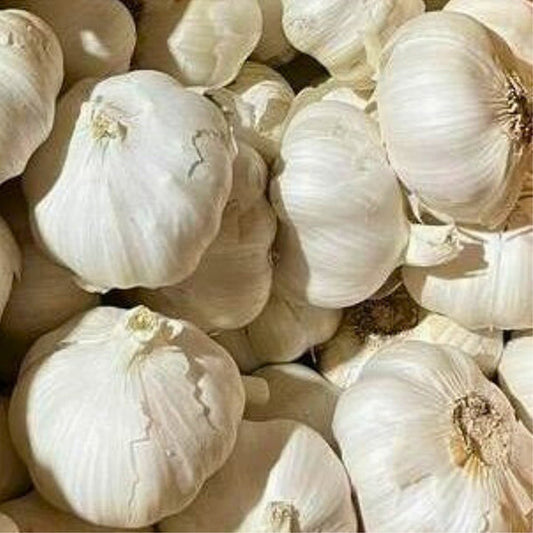

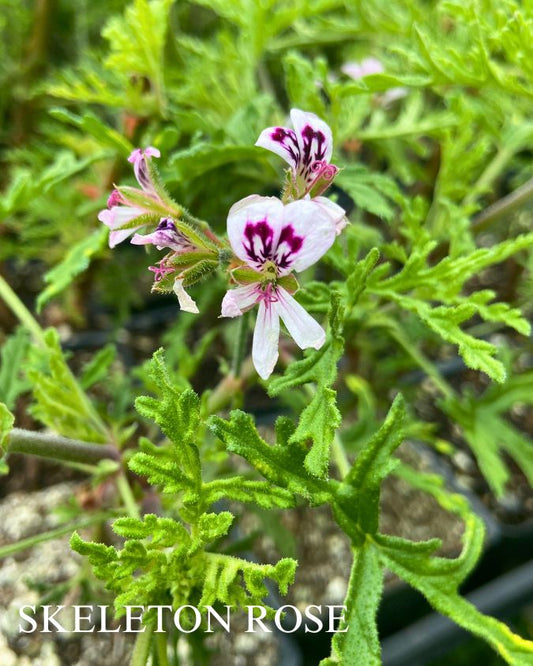
 See Full Description
See Full Description
